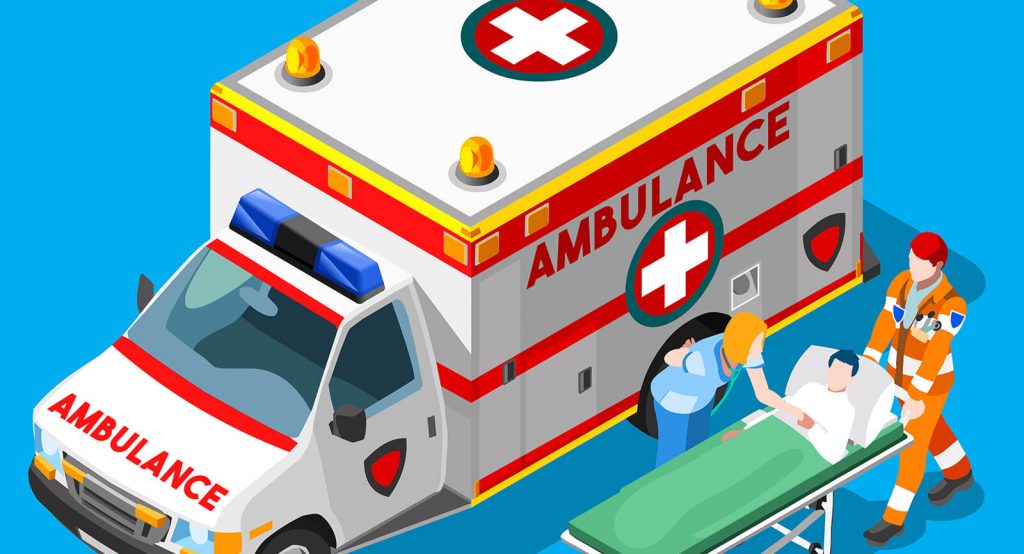The Role of the Emergency Department Clinician: Preventing Noninvasive Ventilation Intolerance

Published by Sarah Brundidge, MSc, RRT, AE-C
The views and ideas presented in this blog article are solely those of the author, and the content is not intended to serve as medical advice. Vapotherm does not practice medicine or provide medical services. Practitioners should refer to the full indications for use and operating instructions of any products referenced herein before prescribing them. Sarah Brundidge is a paid consultant of Vapotherm.
A call comes in from EMS for a patient being brought to the hospital with the signs and symptoms of respiratory distress, including shortness of breath and chest discomfort. As an emergency department (ED) clinician you begin to quickly take inventory of the different diagnoses for the chief complaint of dyspnea. By the time the patient arrives you have gathered and prepared your assessment tools and ventilatory support, like a noninvasive ventilator.
In 2011, nearly 15 million patients presented to the ED with the chief complaint of dyspnea, cough, or chest discomfort.1 Dyspnea can be described as the perception of difficulty breathing. There are numerous causes of dyspnea, making the differential diagnosis difficult at times. ED clinicians’ focus is on the dyspneic patient’s ability to maintain their airway, adequately ventilate, and their cardiac status.
Noninvasive positive pressure ventilation (NIPPV) has been an increasingly popular therapy for stabilizing and treating dyspnea caused by Chronic Obstructive Pulmonary Disease (COPD) exacerbations, cardiogenic pulmonary edema, or congestive heart failure, and acute hypoxemic respiratory distress failure (Table 1).2,3 The usage of NIPPV in recent years has substantially increased as the benefits of this modality are being recognized, and delaying initiation can lead to failure. A survey of NIPPV use in academic EDs in the United States revealed that barriers of use were attributed to the insufficient physician or clinician familiarity, the shortage of trained clinicians, like respiratory therapists, and the lack of equipment availability.4
| Potential Indicators of Success in NIPPV |
|
Table 1. Potential Indicator of Success in NIPPV.2,3
The advantages of utilizing NIPPV are evidenced in numerous research studies and surveys. NIPPV modalities include, but are not limited to, Bilevel Positive Airway Pressure (BPAP) and Continuous Positive Airway Pressure (CPAP). Use of BPAP and CPAP decreases the need for intubation, decreases mortality rates, and increases patient satisfaction.5-7 For all of its advantages, NIPPV is not suitable for all patients, leading to failure and progression to more invasive treatment options. Patients may show intolerance to BPAP and CPAP for the following reasons:
Patient comfort
- Anxiety – many patients experiencing dyspnea also experience anxiety due to their underlying disease. For example, patients with COPD are three times more likely to suffer from anxiety disorders than the general population.8
- Claustrophobia – the mask interfaces used in NIPPV can provoke feelings of claustrophobia because they obstruct a patient’s visual field and often cover both the mouth and nose.
- Facial irritation – the masks and straps can cause skin irritation, pressure sores with prolonged use, and eye and oral irritation due to the drying effect of the air pressure exerted through the ventilator.
- Gastric distention – mild gastric distention is common and can increase the chances of a patient vomiting.9
Aspiration risk
- Unconsciousness – Patient arriving to the ED with altered mental status should not be placed on BPAP or CPAP due to their inability to protect their airway from aspiration.
- Mask interfaces – the profile of full face or oronasal masks may reduce the ability to monitor for patient aspiration.
Asynchrony and mask leaks
The modes and sensitivity settings of NIPPV ventilators can lead to a mismatching of the patient breath and ventilator-delivered breaths, making the experience uncomfortable and ineffective. If the mask leak is great enough there will be a delay in the ventilator reaching the targeted pressure.10
Sedation and analgesic use
Medications can be administered to reduce patient anxiety and pain, to increase tolerance of NIPPV. Use of these medications come with their own risks, namely the risk of aspiration.
Acuity of illness
The greater the acuity of a patient’s present illness, the greater the likelihood of NIPPV intolerance, and the increased likelihood of requiring more invasive ventilatory support.
Intolerance to BPAP and CPAP may ultimately lead to invasive mechanical ventilation via placement of an advanced airway, like an endotracheal tube (ETT) or tracheostomy tube (trach). Intubation and the coupled use of sedation is associated with a large number of adverse effects and negative patient outcomes. Namely, increased care costs, increased lengths of stay, increased ventilator-dependent days, increased mortality, and increased incidence of nosocomial infections.11-14
Once a patient has an ETT the acuity of care increases and will require care delivered through an intensive care unit (ICU) after stabilization in the ED. According to a study conducted by the University of California, Los Angeles, and RAND Health in Santa Monica, California, the average cost of one day of ICU care was $4,004 per patient.11 The care costs drastically increase when a patient acquires a nosocomial infection, such as, ventilator-associated pneumonia (VAP). Two studies by Warren et al. and Anderson et al. offer a low and high estimated costs attributed to VAP, respectively, of $11,897 and $25,072 per patient.15,16 BPAP and CPAP intolerance indirectly leads to increased patient care costs due to progression to more invasive treatments.
As healthcare costs increase and hospitals are being penalized and reimbursed less by insurance companies, it is imperative that treatments are geared towards improved patient outcomes. The ED is oftentimes the “door” a patient first comes through before being admitted to a critical or intensive care unit of a hospital. This makes the ED the ideal setting to initiate treatments and modalities, like noninvasive positive pressure ventilation (NIPPV) for the dyspneic patient. Monitoring a patient for BPAP and CPAP intolerance and adjusting care accordingly while in the ED clinician can prevent the progression to more invasive means of treatment.
References